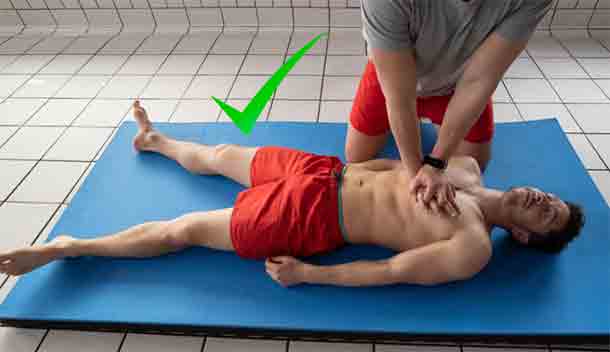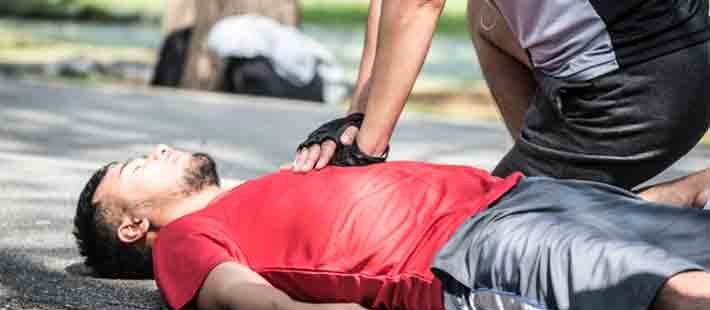CPR is a lifesaving technique that can be done by anyone. CPR stands for Cardiopulmonary Resuscitation, meaning it’s designed to help heart and lung function in someone who has stopped breathing or whose heart has stopped beating. If you’re alone when this happens, DO NOT WAIT FOR PROFESSIONAL HELP TO ARRIVE, just start CPR right away!
The 3 types of CPR are: Hands-Only CPR, Mouth-to-Mouth and Chest Compressions with Mouth-to-Mouth. For more information about how to perform these techniques correctly, read on!
CPR With Only the Hands is a Good Option:
Hands-Only CPR is a good option for people who don’t have access to mouth-to-mouth or they’re uncomfortable trying it. This is when you just push hard and fast on the person’s chest, almost like you’re doing very strong massage. You want to do 100-120 compressions per minute. When giving chest compressions, keep your hands cupped.
To know if you’re doing this correctly, listen for the chest to rise and fall with each compression. Another way is by feeling for the person’s pulse, which means that after every 30 compressions, you should feel a pulse. If not, then you may need to give faster or stronger compressions.
Breathing From Mouth To Mouth:
Mouth-to-Mouth is when you give breathing into the person’s mouth. This can be done with or without a barrier between your mouths, like a piece of cloth. You want to give 2 rescue breaths, taking about 5 seconds per breath. In between breaths, continue chest compressions for 2 minutes before checking if the person has a pulse. If you check and there’s still no pulse, stimulate breathing by pushing air into the person’s mouth. Once the breathing is done, continue chest compressions.
The Methods of Chest Compressions
It is more effective to apply chest compressions with mouth-to-mouth rather than just chest compressions. The difference here is that after 30 compressions and 2 rescue breaths, check the person’s pulse. If they still don’t have a pulse, continue chest compressions and rescue breathing 30 compressions and 2 breaths until paramedics arrive or you are able to get someone else to take over.
Tips for performing each type of CPR correctly

Perform first aid training with the person sitting up or lying on their back and their head tilted back. While performing chest compressions, use your palms to push down on the breastbone. You should press down about 2 inches (5 centimeters), then release completely, and repeat this 30 times in a row if possible. Always perform mouth-to-mouth compressions before chest compressions.
Once you’ve completed that group of 30 chest compressions, you can return to giving breaths by tilting the person’s head back slightly and pinch their nose closed. Take a deep breath and place your lips over theirs while making an air seal around their lips (flared nostrils). Blow into their lungs until you see the person’s chest rise. Once that happens, remove your mouth and quickly allow their chest to fall before repeating this step again for a total of two breaths/two puffs.
Summary
All 3 techniques can be lifesaving in an emergency. The best way to learn is by enrolling in a CPR Class. This is a great way to learn all the tips and tricks in performing CPR correctly. Make sure you are confident with the techniques before trying them on someone who isn’t in good shape. Good luck!
- Growing IT Sector in Prague: What Businesses Need to Know? - November 18, 2024
- How to Choose the Perfect Luxury Hotel in Prague for Your Stay? - November 18, 2024
- Why Skincare Product Ingredients Matter for Lasting Results? - November 3, 2024

